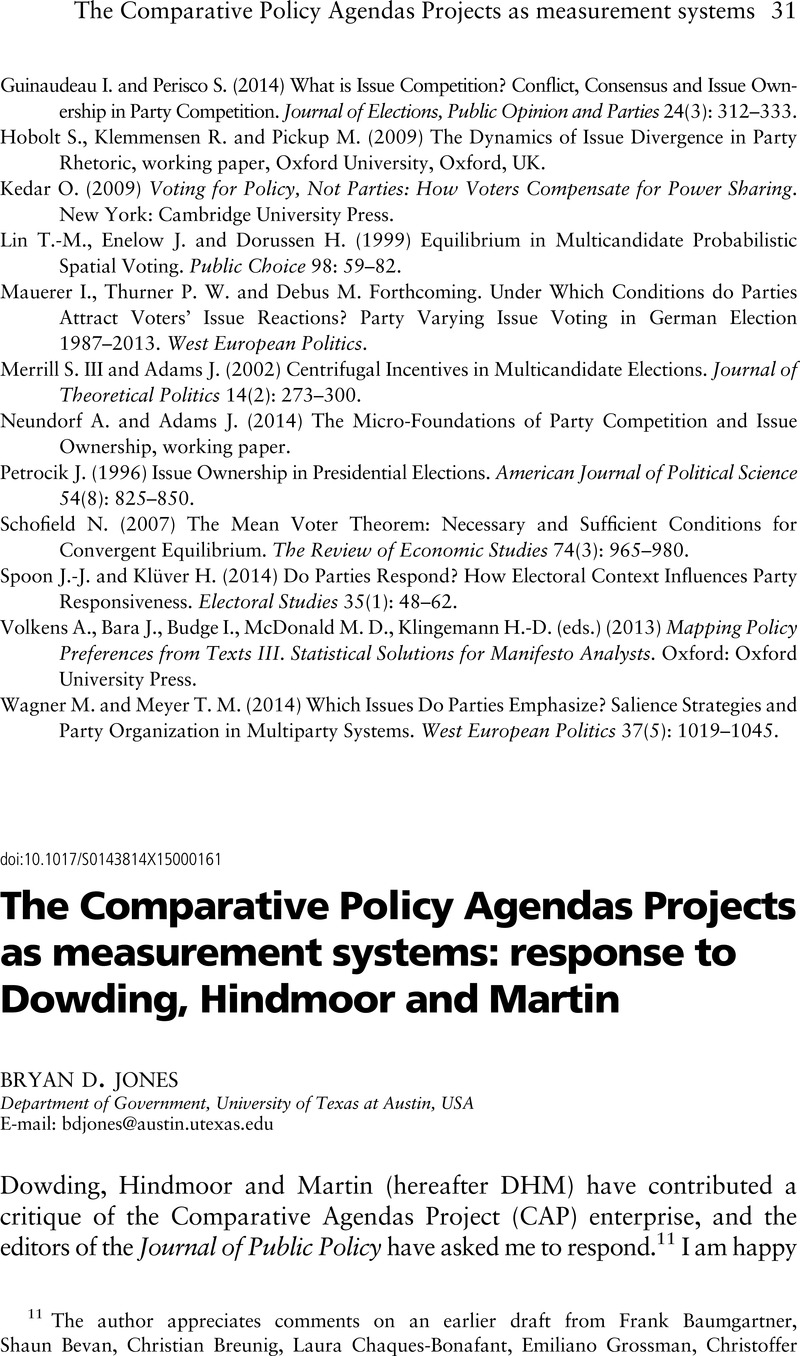Crossref Citations
This article has been cited by the following publications. This list is generated based on data provided by Crossref.
Eissler, Rebecca
Russell, Annelise
and
Jones, Bryan D.
2016.
Contemporary Approaches to Public Policy.
p.
95.
Hurka, Steffen
Adam, Christian
and
Knill, Christoph
2017.
Is Morality Policy Different? Testing Sectoral and Institutional Explanations of Policy Change.
Policy Studies Journal,
Vol. 45,
Issue. 4,
p.
688.
Dowding, Keith
and
Martin, Aaron
2017.
Policy Agendas in Australia.
p.
13.
Dowding, Keith
and
Martin, Aaron
2017.
Policy Agendas in Australia.
p.
231.
Dowding, Keith
and
Martin, Aaron
2017.
Policy Agendas in Australia.
p.
33.
Workman, Samuel
Robinson, Scott
and
Bark, Tracey
2017.
Attention, Institutional Friction, and Policy Change in U.S. Federal Bureaucracies.
SSRN Electronic Journal ,
Baumgartner, Frank R.
Jones, Bryan D.
and
Bonafont, Laura Chaqués
2020.
Dinâmicas da agenda de políticas públicas na América Latina: oportunidades teóricas e empíricas.
Revista de Administração Pública,
Vol. 54,
Issue. 6,
p.
1513.
Loftis, Matt W.
and
Mortensen, Peter B.
2020.
Collaborating with the Machines: A Hybrid Method for Classifying Policy Documents.
Policy Studies Journal,
Vol. 48,
Issue. 1,
p.
184.
Baumgartner, Frank R.
Jones, Bryan D.
and
Bonafont, Laura Chaqués
2020.
Agenda dynamics in Latin America: theoretical and empirical opportunities.
Revista de Administração Pública,
Vol. 54,
Issue. 6,
p.
1513.
Camargo, Chico Q
John, Peter
Margetts, Helen Z
and
Hale, Scott A
2021.
Measuring the Volatility of the Political agenda in Public Opinion and News Media.
Public Opinion Quarterly,
Vol. 85,
Issue. 2,
p.
493.
B. Mortensen, Peter
W. Loftis, Matt
and
B. Seeberg, Henrik
2022.
Explaining Local Policy Agendas.
p.
19.
Beyer, Daniela
Boushey, Graeme
and
Breunig, Christian
2022.
Handbuch Policy-Forschung.
p.
1.
B. Mortensen, Peter
W. Loftis, Matt
and
B. Seeberg, Henrik
2022.
Explaining Local Policy Agendas.
p.
1.
Workman, Samuel
Carlson, Deven
Bark, Tracey
and
Bell, Elizabeth
2022.
Measuring interest group agendas in regulatory proposals: a method and the case of US education policy.
Interest Groups & Advocacy,
Vol. 11,
Issue. 1,
p.
26.
Beyer, Daniela
Boushey, Graeme
and
Breunig, Christian
2023.
Handbuch Policy-Forschung.
p.
325.
Beyer, Daniela
Boushey, Graeme
and
Breunig, Christian
2023.
Handbuch Policy-Forschung.
p.
1.
Wordliczek, Łukasz
2023.
Bridging Disciplinary Divides: Exploring the Synergy of Punctuated Equilibrium Theory and Artificial Neural Networks in Policy Change Analysis.
Barometr Regionalny. Analizy i Prognozy ,
Vol. 19,
Issue. 2,
p.
195.





